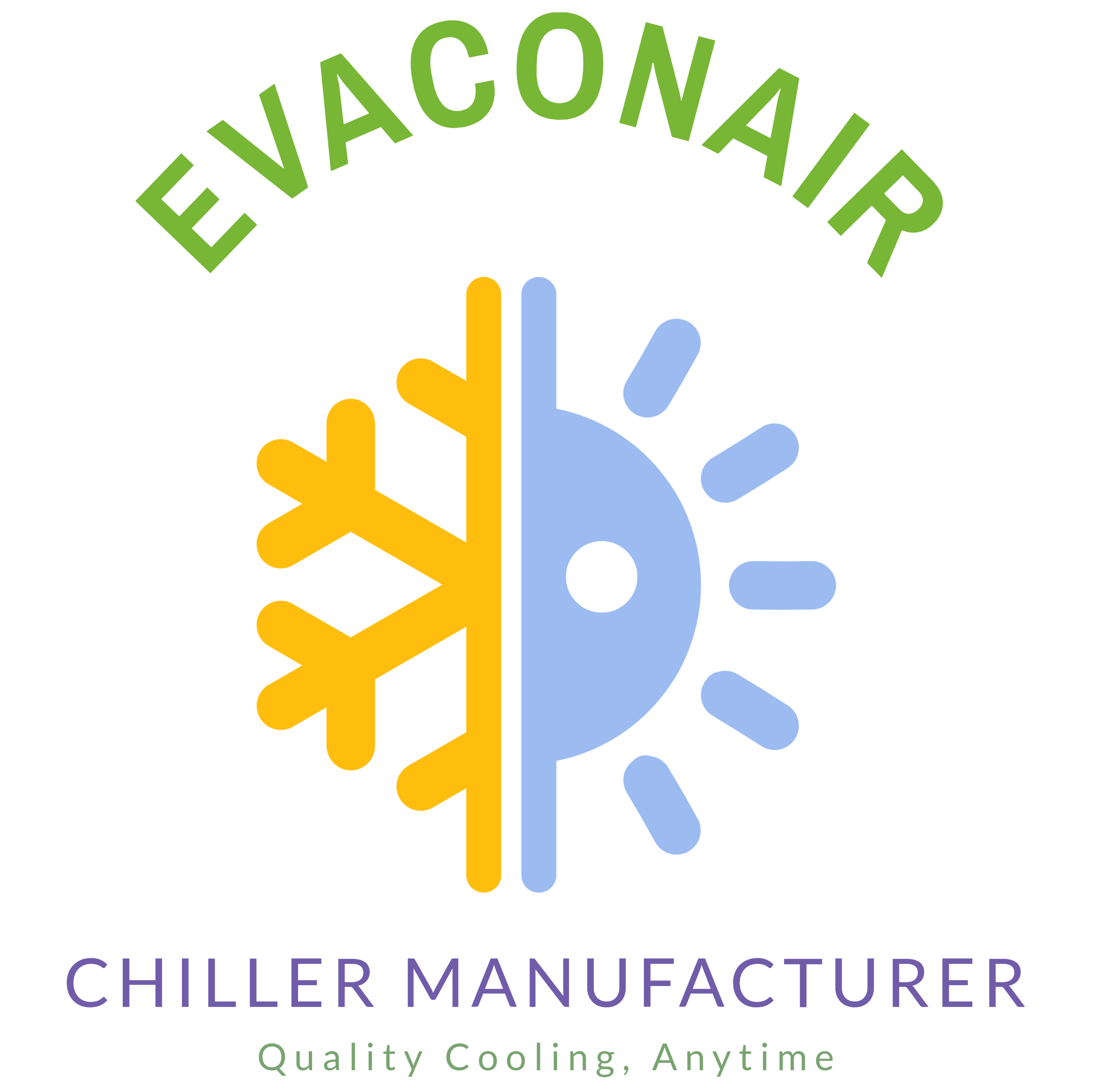Blog
How to Operate a Chiller Plant?
Operating a chiller plant involves a systematic approach to ensure efficient cooling and reliable operation. A well-maintained chiller plant can optimize energy use, reduce operational costs, and maintain the desired temperature in various applications, from industrial processes to large commercial buildings.
Steps to Operate a Chiller Plant
1. Pre-Start-Up Checks
- Inspect the System: Before starting the chiller plant, inspect all components, including the Air-Cooled Water Chiller and Water-Cooled Screw Chiller. Ensure there are no visible signs of damage, leaks, or loose connections.
- Check Fluid Levels: Verify that refrigerant, coolant, and oil levels are adequate. Low levels can lead to system inefficiencies or damage.
- Power Supply: Ensure the chiller is connected to a stable power source with the correct voltage and current ratings.
2. Start-Up Procedure
- Turn On the Control Panel: Power on the control panel and ensure all indicators are functioning correctly. Check that emergency stop buttons are operational.
- Start the Chiller: Depending on the chiller type (e.g., Air Cooled Screw Chiller or Water-Cooled Water Chiller), press the start button. The system will initiate the refrigeration cycle, starting with the compressor.
- Monitor Initial Readings: Observe the temperature and pressure readings displayed on the control panel. Ensure they are within the manufacturer’s recommended range, as provided by Chiller Manufacturers In Ahmedabad.
3. Stabilizing the System
- Monitor Temperature Settings: Keep an eye on the temperature settings to ensure the system stabilizes within the desired range. The Mold Temperature Controller should be adjusted accordingly to maintain consistent mold temperatures if used in plastic processing.
- Flow Rate Checks: Verify that the flow rates of chilled water and refrigerant are within acceptable limits. Proper flow is essential for efficient chiller operation.
4. Routine Operation
- Regular Monitoring: Continuously monitor the chiller’s performance, including temperature, pressure, and flow rates. This can be done manually or through automated systems.
- Listen for Unusual Noises: Be alert for any unusual noises from the chiller or auxiliary equipment like the Vacuum Hopper Loader or Dehumidifier. Unusual sounds could indicate mechanical issues.
- Check Auxiliary Equipment: Ensure that auxiliary equipment such as Hot Air Dryers and Gravimetric Blenders are functioning correctly in conjunction with the chiller.
5. Shutdown Procedure
- Reduce Load Gradually: Before shutting down, gradually reduce the load on the chiller to prevent sudden pressure changes that could damage the system.
- Turn Off the Chiller: Follow the manufacturer’s guidelines for shutting down the system. Allow the compressor and other components to come to a complete stop before disconnecting power.
- Post-Operation Inspection: After shutdown, inspect the chiller and auxiliary equipment for any issues that may have arisen during operation.
6. Maintenance and Troubleshooting
- Regular Maintenance: Schedule routine maintenance to keep the chiller plant in optimal condition. This includes cleaning heat exchangers, checking refrigerant levels, and inspecting all mechanical components.
- Address Issues Promptly: If any issues are detected, address them immediately to avoid costly repairs or downtime. Collaborate with Chiller Dealers In Ahmedabad for replacement parts and technical support.
Conclusion
Operating a chiller plant efficiently requires careful planning, regular monitoring, and adherence to maintenance schedules. Whether managing an Air-Cooled Water Chiller in Ahmedabad or a Water-Cooled Screw Chiller in Ahmedabad, following these steps ensures that your chiller plant performs optimally, reducing energy consumption and maintaining the desired environmental conditions. For more information and expert support, visit our products page.
